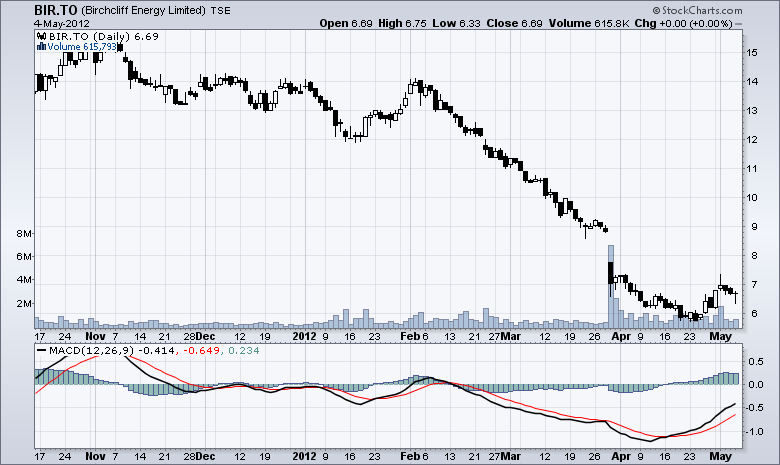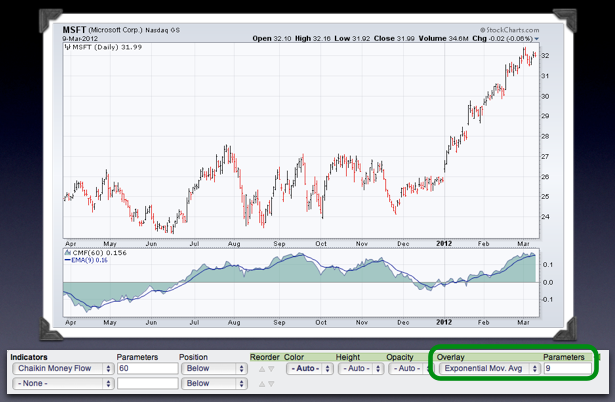Hello Fellow ChartWatchers!
One of the big benefits of becoming a StockCharts member is the ability to access additional charting options. Today I want to show you how the "Advanced Options" section of the "Indicators" area allows you to add a "Signal Line" to any technical indicator.
A Signal Line is a (typically) short-term moving average of an indicator that can be used to create buy or sell signals. One of the most well-known signal lines is the one that automatically comes with the MACD indicator:
The red line on the chart above is the MACD signal line. That signal line is so well known that the MACD also includes a histogram that shows its distance away from the MACD Line.
But what if we wanted to see a signal line for a different oscillator, like the Chaikin Money Flow? Most oscillators do not have built in signal lines however, by using the "Advanced Options" section of the "Indicators" area on the SharpCharts workbench, members can add their own. Here's an example:
(Click here for an updated, live version of this chart)
So here we have a daily chart of Microsoft (from last March) with a 60-day Chaikin Money Flow indicator added to the bottom. By opening up the "Advanced Options" section and selecting "Exponential Mov. Avg" from the "Overlay" dropdown in that section, we've created the blue line that you see on top of the CMF. That blue line is our CMF signal line. When the CMF is above the blue line, it is bullish. When it is below, it is bearish.
EMA's are commonly used for signal lines because they are more sensitive to change however could also be used instead. In addition, while short periods like 9 are also common, you can actually use any period you want depending on your trading style (and I encourage you to experiment with these settings).
- Chip


